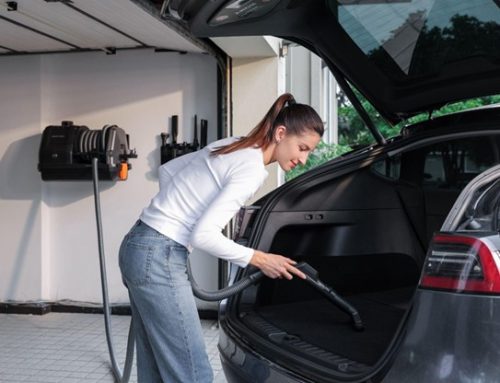People struggle during winter, but what about our cute little pets? The comfort and safety of dogs have to be taken into account because, as it would be with people or animals, dogs should also probably not go outdoors in the cold without proper protection.
Various conditions may affect your dog during the winter: Ice, storms, sleet, freezing winds, and icy paths are significant causes of traffic mishaps. In this article, I would like to concentrate on how you can ensure that your dog is as happy as he can be during winter.
1. Understand Your Dog’s Cold Tolerance
Not every dog is the same when it comes to winter. Small breeds, thin-coated dogs, or elderly pets can be easily cold-sensitive. Breeds such as Siberian Huskies or Alaskan Malamutes will tolerate much lower temperatures than others due to their thick coats, but they even require special attention.
How to tell if your dog is comfortable?
- Shivering or Whining: This indicates that the dog is cold.
- Lack of Desire to Move: Reluctant to step on frozen or snowy ground.
- Paw Lifting: Indicates irritation due to frostbite or building up of ice.
2. Put a Comfortable Dog Jacket on Your Dog
Dogs also do well with an extra layer, like humans, during cold weather. The dog jacket will warm your dogs, especially those short-haired breeds or puppies.
How to choose a dog jacket?
- Size and Fit: It should cover the body without restricting movement.
- Material: Waterproof and insulated fabrics are best to keep snow and rain off.
- Ease of Use: Velcro or snap closures make dressing easier.
3. Dog Boots to Protect Their Paws
Icy, snowy or fiery road salt can cause an itch or frostbite to those sensitive paws. Fortunately, that’s where dog boots come in and can help avoid injuring these precious limbs.
Benefits of dog boots include:
- Traction in Icy Conditions: Prevent slipping that may lead to falling and injuries.
- Protection from Salt: Road salt can chemically burn paw pads.
- Insulation: Keeps paws from freezing in extreme cold.
How to Introduce Dog Boots to Your Dogs?
- Let your dog get accustomed to them by wearing the boots indoors.
- Boots with adjustable straps provide a better fitting.
- Offer treats and practice positive reinforcement to encourage acceptance.
4. Keep Your Dog Cozy Indoors with Dog Pajamas
Dog pajamas can be purchased for indoor comfort. It provides extra warmth, especially for those breeds that are easily cold.
Features to Look For in Dog Pajamas:
- Soft Fabric: Choose breathable materials like cotton or fleece.
- Ease of Cleaning: Machine-washable pajamas are practical.
- Design: Ensure they don’t interfere with your dog’s natural movements or bathroom habits.
5. Ensure a Healthy Winter Diet
During winter, dogs can sometimes expend more calories to warm their organisms. It also means feeding it by adjusting its diet to match the energy needed and not overfeeding it.
Nutrition Tips:
- Protein-Rich Foods: Helps maintain energy levels.
- Hydration: Ensure they have water at their disposal since staying indoors with a heater on can dehydrate an animal.
- Supplements: Ask your veterinarian about omega-3 fatty acids for skin care in dry winter periods.
6. Limit Time Outdoors
However, it is crucial to have your dog exercise; do not let it stay too much outside during freezing temperatures. What happens is that over time, one is likely to suffer frostbite, if not hypothermia.
Outdoor Safety Tips:
- Short Walks: Short and consecutive breaks are much better than a single long break in terms of productivity and overall health.
- Avoid Thin Ice: Crossing frozen lakes or ponds should be avoided to avoid various calamities.
- Reflective Gear: Keeps your dog more conspicuous during the early morning or when walking her/her at night.
7. Create a Warm Sleeping Area
When the weather gets cold, do not forget to give your dog a comfortable bed just to curl up in.
Ideal Setup:
- Elevated Bed: Keeps them off cold floors.
- Covers: Utilize fleece or thermal blankets to provide extra warmth.
- Place: Keep him away from draft areas or areas of the house that are uninsulated.
8. Regular Grooming for a Healthy Coat
A well-looked-after coat is an excellent insulator for your dog. However, in winter, grooming needs change.
Do and Don’t List in Grooming:
- Do Brush Regularly: Groom regularly to prevent matting, which may minimize insulation.
- Don’t Bathe Too Often: This removes all-natural oils, leading to dry skin.
- Apply Paw Balm: Soothes cracked paws due to dryness.
9. Be Aware of Winter Hazards
Winter poses certain risks, such as poisoning from de-icers.
Prevention:
- Keep chemicals out of reach and immediately clean up spills.
- Sprinkle pet-friendly ice melters on your driveway and walkways.
- After walks, inspect your dog’s paws for debris.
10. Regular Veterinary Care
Flu-like illness, bronchitis, pneumonia, or worse, exacerbation of potential arthritis conditions during the winter is not impossible. If your dog is playful and happy, you should take it for a vet checkup.
Key Winter Concerns:
- Joint Pain: Arthritis in older pups becomes severe during the winter season.
- Skin Issues: On this account, the skin becomes itchy and feels as if it has formed flakes.
- Vaccinations: Be sure your immunizations for flu and other conditions are current.
Wrapping Up
Winter need not be daunting to your furry friend. One can easily keep dogs warm, safe, and healthy with proper precautions such as a fitted dog jacket, protective dog boots, and warm dog pajamas. Keep an eye on their behavior, and never let discomfort bug them.






Leave A Comment